When you say Vojtěch Hynais, everyone probably associates his name with the beautiful curtain in the Golden Chapel in Prague. The Czech painter and graphic artist, a distinctive talent of the so-called National Theatre generation of artists, whose birth has already been 170 years ago, also made a significant contribution to the history of Czech painting with a number of other monumental paintings, atmospheric plein air paintings, many portraits and the decoration of the Pantheon of the National Museum in Prague. However, he also enjoyed recognition and prestigious commissions in Vienna and Paris.
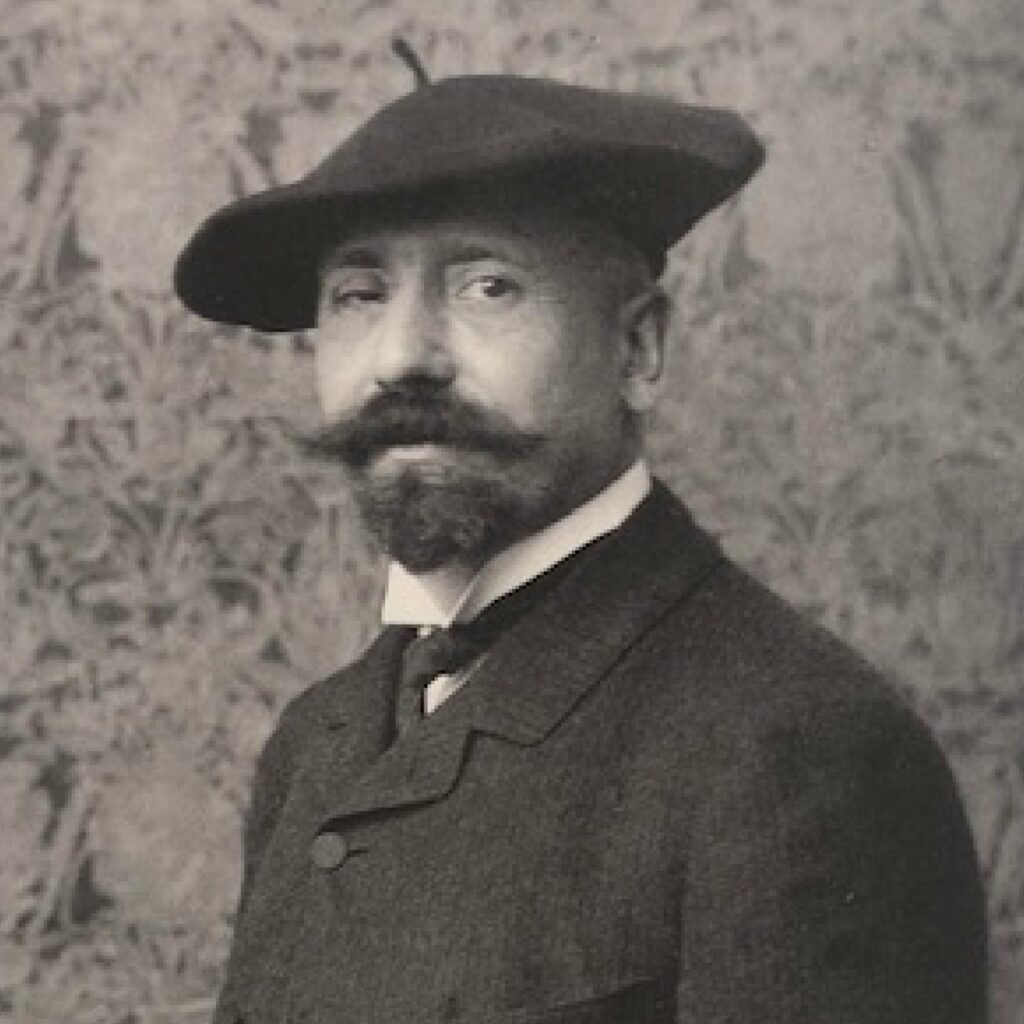
Vojtěch Adalbert Hynais was born on 14 December 1854 in Vienna as the first-born son of Czech parents, a tailor Vojtěch Hynais, who came from the Pilsen region, and his wife Anna, née Žďárská, who was from the Jičín region, and had brothers Jan and Cyril. His father was a Czech writer and a great patriot, he taught his children Czech and used to go with them to Bohemia.
Vojtěch had not only artistic talent but also musical talent, he played the piano well. At the age of sixteen he entered a real school, but at the intercession of Count Jan Harrach, a prominent patron of the arts, he began studying at the Vienna Academy of Fine Arts in 1870 and in 1873 became a pupil of the German classicist painter Anselm Feuerbach. The latter invited him to work on the new building of the Vienna Academy of Arts and arranged a Roman scholarship for him. While still a student, Hynais painted a picture Hercules in the cradlefor which he won the Füger Gold Medal. In 1873 he also met other artists of the future generation of the National Theatre at the World Exhibition in Vienna.
From 1874 to 1875 and 1877 he studied in Venice, Florence and Rome, where he decorated the chapel of the Czech Hospice with a fresco of St.Wenceslas and ceiling paintings of the Madonna, St.Vojtěch and Charles IV. He completed his studies in Paris, where he went in 1878 with a recommendation to the painter Jaroslav Čermák. He spent two years at the École des beaux arts (School of Fine Arts) and worked with the painter Paul Baudry.
In 1880 he won a competition for the decoration of the staircase and boudoir of the royal box of the National Theatre under construction. For the staircase he designed the apotheosis Peace and frieze painting Allegories of the Czech Lands, and for the boudoir the allegory of the four seasons. He painted the pictures in Paris and finished them in Prague. At that time he had a studio in Montmartre, where he was accompanied by other Czech artists, the painter Luděk Marold and the sculptor František Bílek. After Hynais left for Prague, the studio was used by sculptor Josef Mařatka.
Hynais was in Prague when the National Theatre burned down on 12 August 1881. He was instrumental in saving his own and several other works when he fearlessly carried them out of the burning building. As the Committee for the Establishment of the Czech National Theatre did not reach an agreement with the author of the original curtain, František Ženíšek, they approached Hynais in 1882. The fire, which was a disaster for Bohemia, brought Hynais the most prestigious commission of his life. The curtain is now considered the pinnacle of his work.
He and two assistants worked on it for 90 days in a wooden shed in the courtyard of the Czech Technology on Charles Square, using 26 kilograms of paint. Although it is a painting on canvas, it gives the impression of a tapestry. It weighs 180 kilograms and has a surface area of 142 square metres. Hynais chose as his subject the sacrifice of the Czech nation in building the National Theatre, which is symbolically depicted on the curtain as an ancient temple of art and the muses. He drew up the design again in Paris. In the centre of the composition he painted a mourning Slavia, at whose feet the nation lays offerings. On the left, the Genius of the Nation hovers like an angel, encouraging the nation to action.
The model for Genius was the famous Parisian model and painter Suzanne Valadon, mother of the painter Maurice Utrillo. In addition to famous models, Hynais also chose distinctive types of women on the street, using family members and friends and working with photographs. In the director's room of the National Theatre hangs a painting of St. Cecilia, where the model was the actress Berta Formanová, the mistress of the then director František Šubert.
The curtain secured Hynais' immortality, but he did not initially receive any gratitude for his work. The Choir for the Establishment of the Czech National Theatre, which commissioned the curtain from him, did not accept it after its completion. It agreed to hang it only at the painter's expense and responsibility. The reason for this was, among other things, that he had done the preparatory work in Paris and used French women as models, who were said to be too thin. The choir expected rather corpulent Manesian types. Time eventually settled the opinion on the curtain. Today, even primary school children are learning about it. The Hynais curtain is simply a concept. The first to appreciate the painting was the eminent historian Professor V. V. Štech.
Hynais had to sue for payment of the agreed fee of 9,000 gold pieces. In the end he won, but the last painting in the presidential salons from the allegory of the four seasons, the Winter, added in 1901, twenty years after the first three and already in the Art Nouveau style.
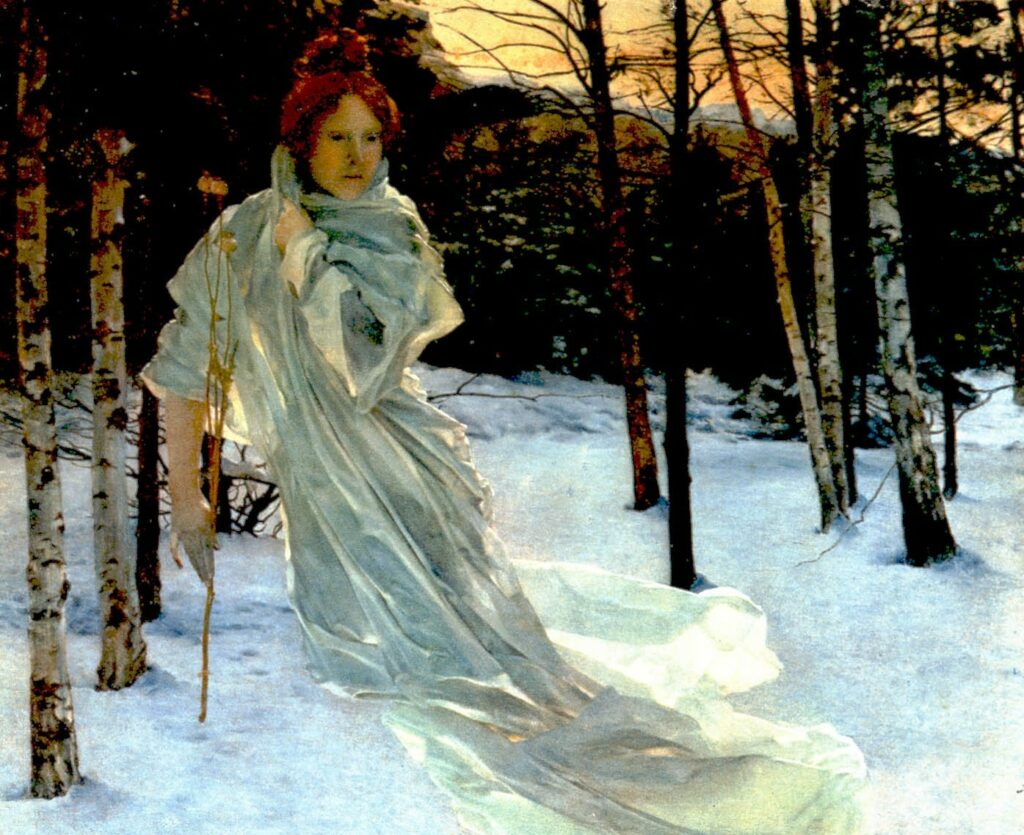
The new curtain rose for the first time at the National Theatre during the gala performance of Smetana's Libuše November 18, 1883. At that time Hynais left Prague for a short visit to his parents in Vienna and in one day he painted a portrait of his mother Anna.
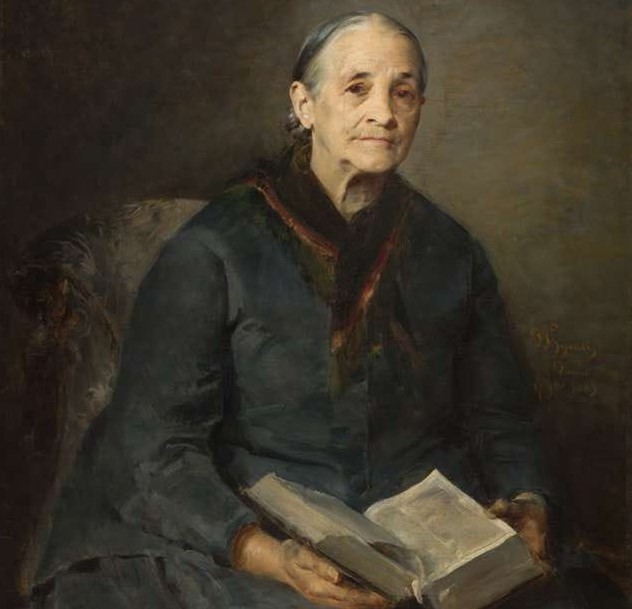
After returning to Paris, he began living with Augusta Melanie Voirin, a model 10 years his junior. The birth of their first offspring, a son, George, in 1890, and two years later a daughter, Anna, also a talented painter, made his financial situation somewhat difficult. In order to support his family, in addition to painting, Hynais also worked as a graphic artist, designing posters for the Jubilee Exhibition in Prague in 1891 and for the 1895 Ethnographic Exhibition, where he applied his decorative talents. Between 1888-92 he collaborated on designs for decorative porcelain with the famous French porcelain factory in Sèvres. In 1886 he won an important commission for a series of lunettes for the Hoftheater in Vienna.
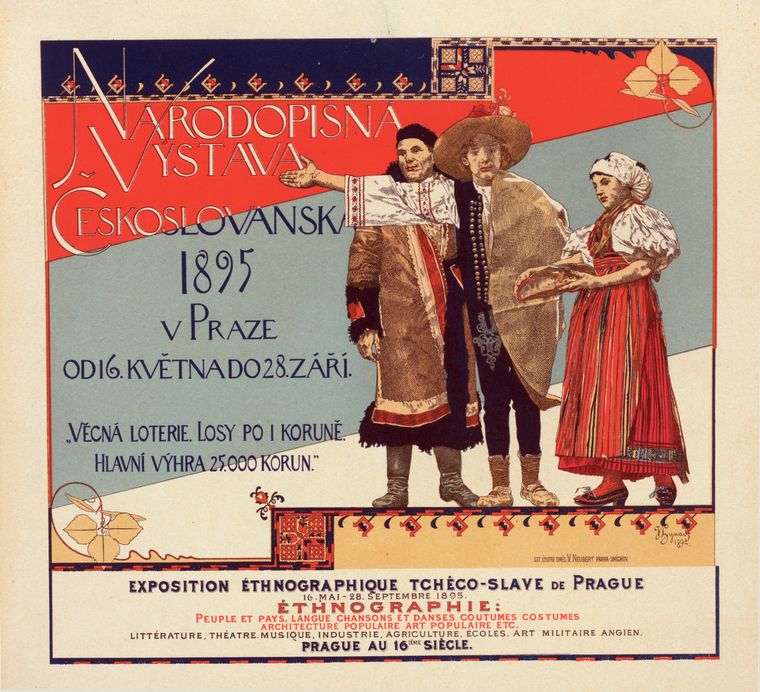
In 1899 he created frescoes for the Pantheon of the National Museum in Prague Art, Inspiration, Power and progress a Science. His long-time friend, the sculptor Myslbek, later created an equestrian monument to St. Wenceslas in front of the museum.
Hynais' work was also appreciated by the architect and patron Josef Hlávka. At his suggestion, he became a professor at the Academy of Fine Arts in Prague in 1893. At that time he painted Hlávka's likeness and a portrait of his wife Zdeňka. However, he did not join the Academy of Fine Arts until 1894. Before he finally left Paris after 15 years, he married his long-time companion and mother of his children, Augusta, in May 1893. After joining the Academy, he was elected rector of the Academy. He repeated the post of rector twice more. He worked at the Academy for 30 years until his death and educated dozens of painters. It was thanks to him that the Wiehl Pavilion, originally built for the Holešovice Exhibition, was rebuilt for the Academy's professors, "tailor-made" for specific artists. He and others moved to the new location above Stromovka Park in 1903.
Sometime during the 1990s, Hynais lost one eye as a result of untreated cataracts, but it didn't stop him from working.
As early as 1888, encouraged by his success at the World Exhibition in Paris, he had been working on a large representative work on the theme of the Judgement of Parid. The preparation was financially very demanding and again Hlávka helped him. He first arranged for the Austrian Ministry of Culture and Education to purchase the painting, but it eventually refused for prudish reasons. Hlávka then pushed the then minister for a grant for the painting. Ecce Homowhich, however, Hynais never completed. However, the money received from the ministry was enough to produce the final version The Court of Paridwhich Hynais considered his life's work. The painting was exhibited at the Paris Salon in 1894 and then in Vienna, Berlin and Prague, but it did not find a buyer. Hlávka bought it and donated it to the Czech Academy of Sciences, Arts and Letters (the predecessor of today's Academy of Sciences of the Czech Republic), which he was instrumental in founding.
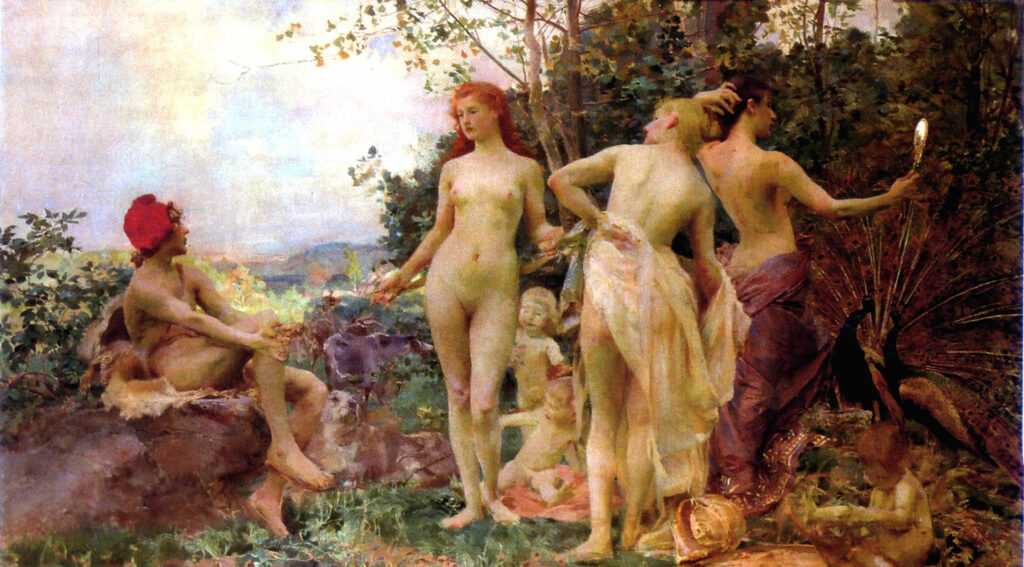
Hynais was not only a brilliant draughtsman and painter with a flair for capturing colourful atmospheres, he was also a respected and popular portraitist in Paris who could capture the moods and feelings of his models. In Prague he painted, among others, portraits of the poet Jaroslav Vrchlický, the painter Luděk Marold, the doctor Josef Thomayer, the mayor Jan Podlipný, the lawyer Leopold Katz and the businessman and patron Ferdinand Náprstek, the older brother of the famous Vojta Náprstek.
In 1919-1923 he portrayed President T. G. Masaryk, but after fifty-six sessions the president refused further cooperation and the portrait remained unfinished.
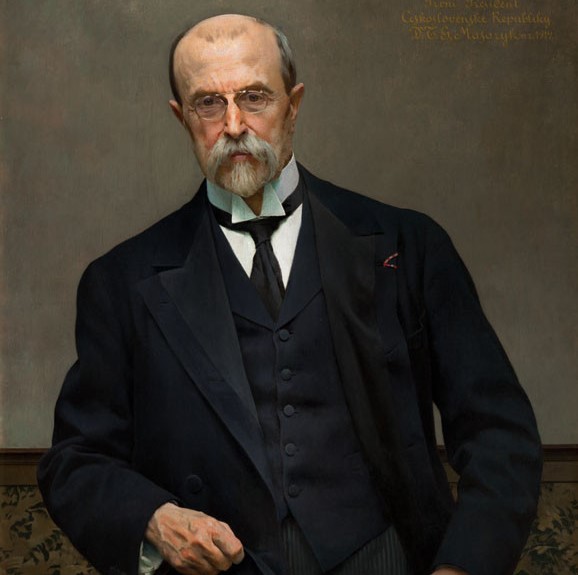
Vojtěch Hynais received many successes and awards: he won the prize of the Czech Academy of Sciences and Arts, a gold medal at the World Exhibition in Paris and then in St. Louis, and a medal at the Munich exhibition. In 1923 he was appointed an officer of the French Legion of Honour, chairman of the Union of Artists and received the Mánes Fund Prize.
He died in Prague on 22 August 1925, according to some sources of lung cancer. He is buried at the Vyšehrad Nightingale.
Gnews.cz / wikipedia / Jana Černá



